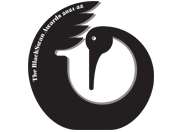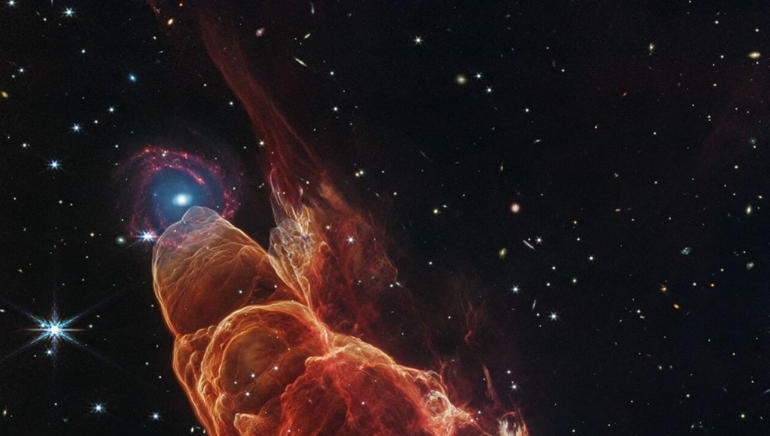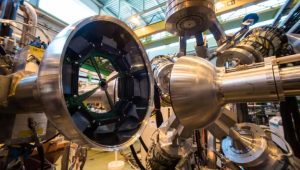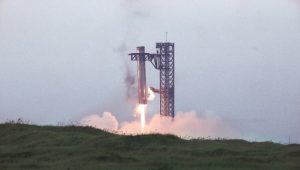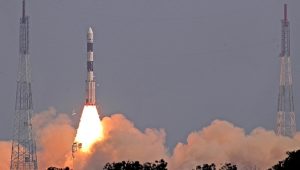NASA has once again showcased the amazing wonders of space. The James Webb Space Telescope (JWST) has captured an astonishing astronomical event: a rare collision between a powerful jet from a young star and a distant spiral galaxy. Scientists refer to this as a “lucky alignment” of two unconnected cosmic objects, which provides a unique viewpoint on the cosmos.
Infant stars frequently release jets that traverse long distances through space. In this scenario, the jet appears to be perfectly aligned with a spiral galaxy in the backdrop, resulting in a stunning visual effect. This event, known as Herbig-Haro 49/50, occurs in the Chamaeleon constellation, around 630 light-years from Earth.
NASA’s Spitzer Space Telescope initially noticed the phenomenon in 2006, identifying it as a spiral. Researchers termed it the “Cosmic Tornado” because of its spinning look. However, the misty item at the formation’s tip remained a mystery for many years.
JWST recently used improved imaging technologies to examine HH 49/50. The telescope’s high-resolution sensors identified the “tornado’s” tip as a faraway spiral galaxy. NASA has described the discovery as “an extraordinary cosmic coincidence,” making it one of JWST’s most intriguing observations to date.




